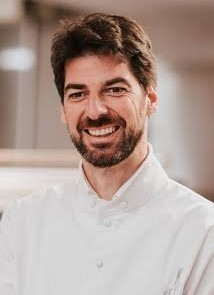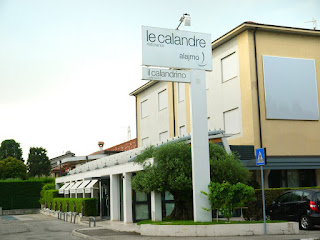Franco Baresi - AC Milan great
Defender voted club's 'player of the century'
The great AC Milan and Italy footballer Franco Baresi was born on this day in 1960 in Travagliato, a town in Lombardy about 13km (8 miles) south-west of Brescia. Baresi, a central defender who was at his most effective playing in the libero – sweeper – role, made 719 competitive appearances for the rossoneri, with whom he spent his entire playing career, spanning 20 years. During that time he won the Italian championship – known as the scudetto – six times and the European Cup three times, as well as many other trophies. He was made captain of the team at just 22 years old. At Milan he was part of one of the most formidable defences of all time, alongside Paolo Maldini, Alessandro Costacurta, Mauro Tassotti, and later Christian Panucci, with Giovanni Galli in goal. He and Maldini shared the extraordinary record that in 196 matches they played together, AC Milan conceded only 23 goals. Baresi also won 81 caps for the Azzurri in an international career in which he went to three World Cups. Although he did not make an appearance, he was part of the Azzurri squad that won the competition in Spain in 1982. Read more…
________________________________________
Giovanni Battista Gaulli – artist
Baroque painter decorated leading Jesuit church in Rome
Painter Giovanni Battista Gaulli, whose nickname was Baciccio, was born on this day in 1639 in Genoa. He became a leading baroque painter whose work was influenced by the sculptor and architect Gian Lorenzo Bernini. He is most remembered for his beautiful frescoes in the Church of Gesù in Rome, which are considered a masterpiece of quadratura, or architectural illusionism. Gaulli was born in Genoa and his parents died when he was just a teenager in an outbreak of plague in the city. He was apprenticed with the painter Luciano Borzone but would also have been influenced by some of the foreign artists who were working in Genoa in the mid 17th century. Peter Paul Rubens and Anthony van Dyck were in Genoa at the time but it is also said that Gaulli adopted the warm palette of Genoese artist Bernardo Strozzi. Gaulli was introduced to Bernini, who recognised his talent and helped to promote him. In 1662 he was accepted into the Roman artists’ guild, the Accademia di San Luca. The following year Gaulli received his first public commission, for an altarpiece in the Church of San Rocco in Rome. Read more…
_______________________________________
Italy's first football championship
Four teams played three matches - all in one day
Genoa became the first football champions of Italy on this day in 1898, winning a four-team tournament that took place in Turin in the space of a single day. The event was organised by the newly-formed Italian Football Federation, set up earlier in the year after Genoa and FC Torinese had met in the first organised match played on Italian soil. The two other teams invited to take part were also from Turin, namely Internazionale di Torino and Ginnastica Torino. They assembled at the Velodromo Umberto I, where there was space for a pitch at the centre of a cycle track, with the first match kicking off at 9am. Internazionale beat FC Torinese 1-0 in the opening game, after which Genoa defeated Ginnastica 2-1. After a break for lunch, the final kicked off at 3pm, Genoa winning again by a 2-1 scoreline, reportedly after playing extra time. The trophy was presented by the Duke of the Abruzzi. At least four members of the Genoa team were British, including the goalkeeper, James Spensley, a doctor from Stoke Newington in London who had arrived in the port city in 1897 to look after the health needs of British sailors. Read more…
_______________________________________
Victor Amadeus I of Savoy
Duke’s French connection may have proved fatal
Victor Amadeus I, who during his seven-year reign over Savoy was forced to give strategic territory to France, was born on this day in 1587 in Turin. He was the son of Charles Emmanuel I, Duke of Savoy, and Catherine Micaela of Spain, daughter of Philip II of Spain. Victor Amadeus spent much of his childhood in Madrid at the court of his grandfather. He became heir-apparent to the Duchy of Savoy, when his brother, Filippo Emanuele, died in 1605 and he succeeded to the Dukedom after his father’s death in 1630. Charles Emmanuel’s policies had made relationships with France and Spain unstable and troops were needed to defend the Duchy. But as there was no money to recruit mercenaries or train local soldiers, Victor Amadeus signed a peace treaty with Spain. In 1619 he married Christine Marie of France, the daughter of Henry IV of France and Marie de Medici. After war broke out amongst rival claimants to the city of Mantua, the French took the fortress of Pinerolo, part of the Duchy of Savoy, in 1630. The Treaty of Cherasco the following year brought peace again to northern Italy. Read more…
______________________________________
Book of the Day: Golazzo: The Football Italia Years, by Jonathan Grade
It was the deal of the century. British superstar Paul Gascoigne had joined Lazio and Channel 4 swooped to pick up live rights to Italian football for just £1.5 million. Serie A just happened to be the best league in the world and over the next decade millions would tune in to watch the biggest names on the planet. Saturday mornings were also about to be transformed with the launch of Gazzetta Football Italia. With the sharp wit of James Richardson allied to the dulcet tones of broadcasting legend Kenneth Wolstenholme, the show was an institution at the weekend. Having worked on the show since its inception Jonathan Grade gives a first-hand account of this iconic production. Golazzo: The Football Italia Years takes a nostalgic look back with some stories from behind the scenes in the days when Italian football ruled the world.Jonathan Grade is a television producer, who spent the best part of a decade working on the much-loved Gazzetta Football Italia and live Football Italia programmes from 1993 until 2002- the last two of which as Series Editor.


.jpg)





.jpg)



.jpg)






